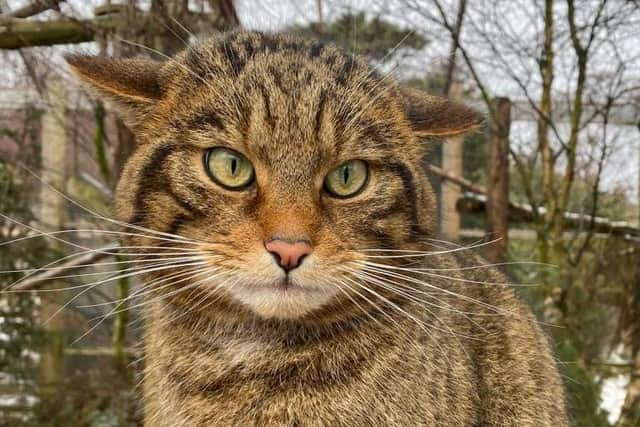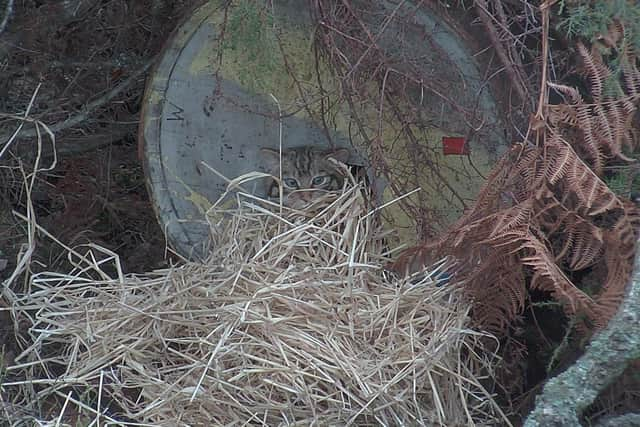Scottish wildcats prepare for life of freedom as race to halt extinction ramps up with wild release later this year
The cats due to be released, selected from 22 kittens born last year as part of a pioneering breeding programme, have been moved to specially created large enclosures with a naturalistic environment to help fully prepare them for their new life in the wild.
They are due to be set free in Cairngorms National Park later this year.
Advertisement
Hide AdAdvertisement
Hide AdThe Scottish wildcat, often dubbed the Highland tiger, is the UK’s only surviving native feline, but also its rarest and most threatened mammal.
The species, Felis silvestris, was once widespread. However, populations have been virtually wiped out as a result of persecution and hybridisation through interbreeding with domestic and feral cats.
It is thought just a handful of the animals remain in the Highlands of Scotland, prompting experts to declare the species “functionally extinct” in the wild.
A national rescue effort, Saving Wildcats – led by the Royal Zoological Society of Scotland (RZSS) – is working to restore viable numbers by breeding and releasing them into the Cairngorms Connect project area.
David Barclay, Saving Wildcats ex-situ conservation manager, said: “It is fantastic to have passed this critical milestone in the project and exciting to take another important step forward in the plans to release wildcats this year.


“The journey to restore a viable wildcat population in Scotland is just beginning and we are incredibly grateful for the efforts of our team members, partners and supporters whose expertise has been crucial to reach this point.”
The pre-release enclosures are situated in an eight-acre conservation breeding centre at the RZSS’s Highland Wildlife Park, at Kincraig near Aviemore.
They are managed in a way that supports natural development and reduces the animals’ exposure to humans and disturbance, with remote monitoring and no public viewing.
Advertisement
Hide AdAdvertisement
Hide Ad“The large pre-release enclosures are designed to encourage the cats to exhibit their full repertoire of natural behaviours whilst promoting social interactions and communication between cats,” Mr Barclay added.


“Our expert keeper team also use a selection of tools and techniques to promote natural activity patterns whilst enhancing key skills needed for life in the wild, including hunting, foraging and scent marking.”
A second breeding season has also begun at the Highland Wildlife Park, with hopes that kittens of eight wildcat pairs will be released next year.
Prospective parent cats are Fruin and Beanie, Fian and Rannoch, Cranachan and Margaret, Torr and Embo, Droma and Arran, Oscar and Caol Ila, and Nell and Con.
Another male, Ordie, is patiently awaiting the arrival of a new mate after his previous partner, Tulla, died from complications following a fractured leg.


Rannoch’s last partner Fearn moved to Golders Hill Park Zoo in London.
Saving Wildcats collaborators include NatureScot, Forestry and Land Scotland, Cairngorms National Park Authority, Norden’s Ark and Consejería de Medio Ambiente y Ordenación del Territorio de la Junta de Andalucía.
The project is funded via contributions from the European Union’s LIFE programme, the Garfield Weston Foundation, the National Trust for Scotland, the People’s Trust for Endangered Species, the European Nature Trust and the Scottish Government.
Comments
Want to join the conversation? Please or to comment on this article.